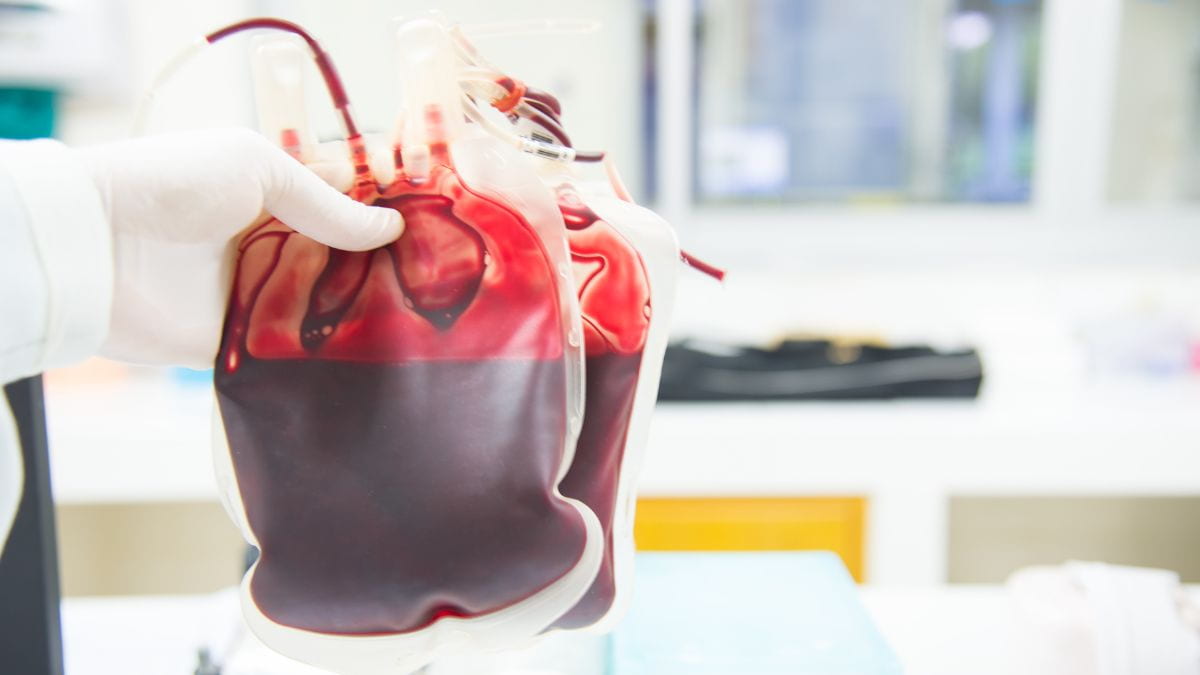Guest blog by Adaeze Oreh
When I signed up for the Harvard Kennedy School Implementing Public Policy programme, I thought I knew quite a bit about my policy challenge! I was applying to the programme basically to figure out new concepts and get new tools that would help me as Director of Planning for Nigeria’s Blood Services agency implement those ideas my organisation already had about solving Nigeria’s blood safety problem. You see, my country has a population of over 200 million people and for decades has been bedevilled by a frustrating lack of ready availability of safe blood to meet the country’s needs. This gap has contributed immensely to high maternal death rates, and the large number of children who die before the age of five. As an organisation, we had some ideas in our toolbox to address this, and I hoped IPP under Matt Andrews and the HKS faculty’s guidance would provide the magic bullet for implementation. I was not prepared for the level of insight that the course would provide.
Right from the first week, I was frantically taking notes – notes on Professor Matt Andrews sessions, notes on all the reading material (both recommended and optional!), and even notes on the recommended videos. I just could not get enough of this new perspective which seemed instinctive and natural even, but just somehow had never occurred to me before. Looking back at my first week’s submission, it was dripping in ‘plan and control’, talking about procedures, reporting, command, and control. Getting acquainted with PDIA required a great deal of guided introspection and reflection on just how much of a role assumptions had played in the way my organisation operated and relied on the illusion of certainty. That implicit delusion that plagues many a policy maker that the environment for policy implementation is completely known and understood, and that solutions would work in that context.
As the weeks progressed, my outlook and thinking changed – as is evident from the differences in my fishbone diagrams five weeks apart. The issue had not changed, rather, addressing it through the PDIA lens, offered a completely different perspective that exposed much more room to act and address the policy challenge. My first fishbone diagram in retrospect looked mired in frustration, with an ‘us’ versus ‘them’ mentality and little change space in which to take action. However, just five weeks down the road, following the iterations and contextual analyses that are vital to PDIA, my fishbone diagram suddenly seemed more collaborative, increasingly hopeful and had identified larger change space and room for the implementation of ideas proffered by other stakeholders from our policy environment outside my core team.

Fishbone Diagram IPP Week 6
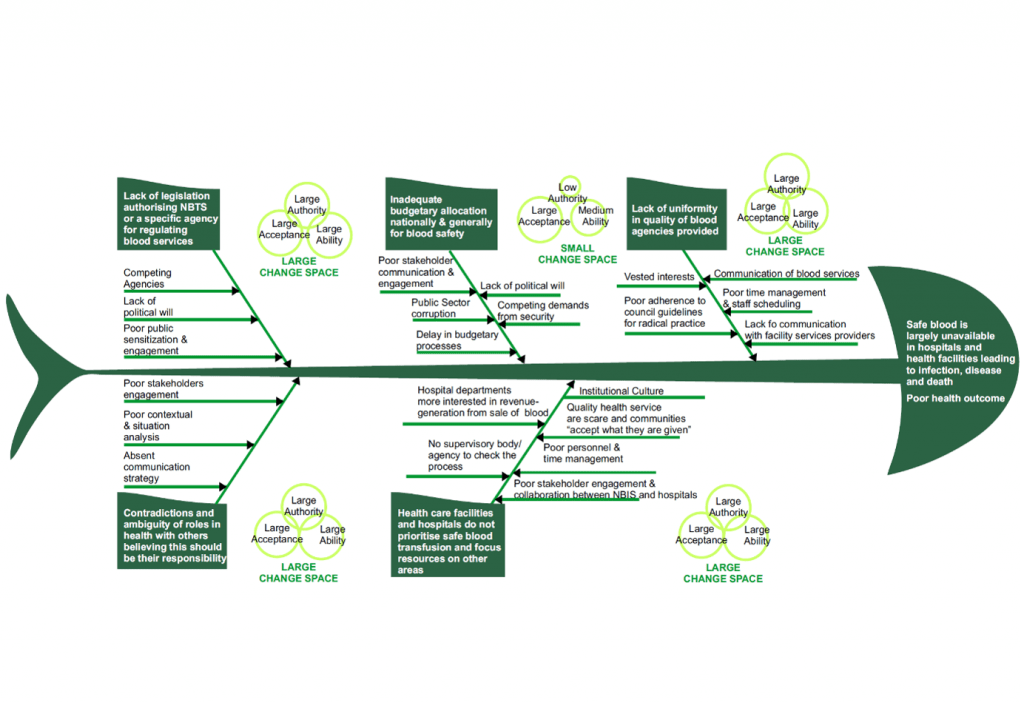
Fishbone Diagram IPP Week 11
One major lesson for me, was how opening conversation spaces for different people to share their ideas and viewpoints, led to a change in how we addressed some of the problems encountered in the hospitals. We would never have tackled some of those thorny issues the way we did if we had not allowed other players from outside the team in to make their contributions.
Other key learnings for me from the IPP course included the importance of building supportive teams – both in-house and with external stakeholders by nurturing relationships that are based on mutual respect and trust. For us working in the Blood Service, our stakeholder network is quite vast – spanning doctors, nurses, emergency responders, patients, families, community groups, national, state, and local governments, media, and the military. Building strong relationships that are not only inward-facing but to a large extent outwards-oriented requires the agility and adaptation that only the PDIA process can provide. Additionally, sharing small wins is critical to motivating team members and galvanising authoriser support in ways that lead to even bigger accomplishments for the policy change.
Thanks to PDIA, some organisations with whom we had never been able to see eye-to-eye agreed to sit down and discuss the country’s blood safety challenge and way forward with us. All we had to do was reach out to them and hear them out. Without this approach, we were likely to have remained in our silos, in a cyclically endless struggle to implement the policy for blood safety in the country.
The IPP course made it very clear to me that for my organisation to successfully tackle the challenges with assuring Nigeria’s safe blood supply in the face of complex policy challenges, a role as individual hero would be ill-suited and ineffective. The picture of an orchestra working in sync that was shared during one of the sessions has stuck with me, even during some stakeholder meetings! Hopefully, as we continue this challenging work – successively reaching crucial milestones with each stakeholder playing their different but equally vital roles, we will eventually deliver a masterpiece for blood safety in Nigeria.
A significant amount of our analyses prior to the course were prone to several pitfalls in problem-solving. Definitely, IPP has completely changed the way I will approach problems in the future – incorporating check-lists with indicators for the problem at hand; ownership of the resolution, success, and barriers; and identification of important actors will feature prominently in my decision-making to avoid flawed problem definitions. In addition, by intentionally including other external stakeholders in sharing ideas and designing solutions, we will avoid a tendency towards narrowly framing the issue from our own restricted view and limit the possibility of miscommunication.
A breakthrough for us was a series of stakeholder meetings we have commenced, bringing key players together from across multiple sectors and regions of the country to engage and chart a way forward for blood safety in Nigeria. The first of these gatherings took place in the Northern city of Jos in Plateau State with its beautiful and majestic hills and scenery. There were representatives from community advocacy groups, religious organisations, health workers, hospital managers, media and communications agents, military, voluntary blood donors and government leaders. Having such a wide array of voices in blood safety in Nigeria come together in one platform to agree on the strategies for advancing the country’s blood services was unprecedented. In Matt’s word’s, “Often we will realise that we cannot fully understand the problem”. That is why it is important to open the doors to as many players as possible in the policy challenge – everyone comes with a different view, a different perspective.

Meeting Presentations

Meeting Working Groups
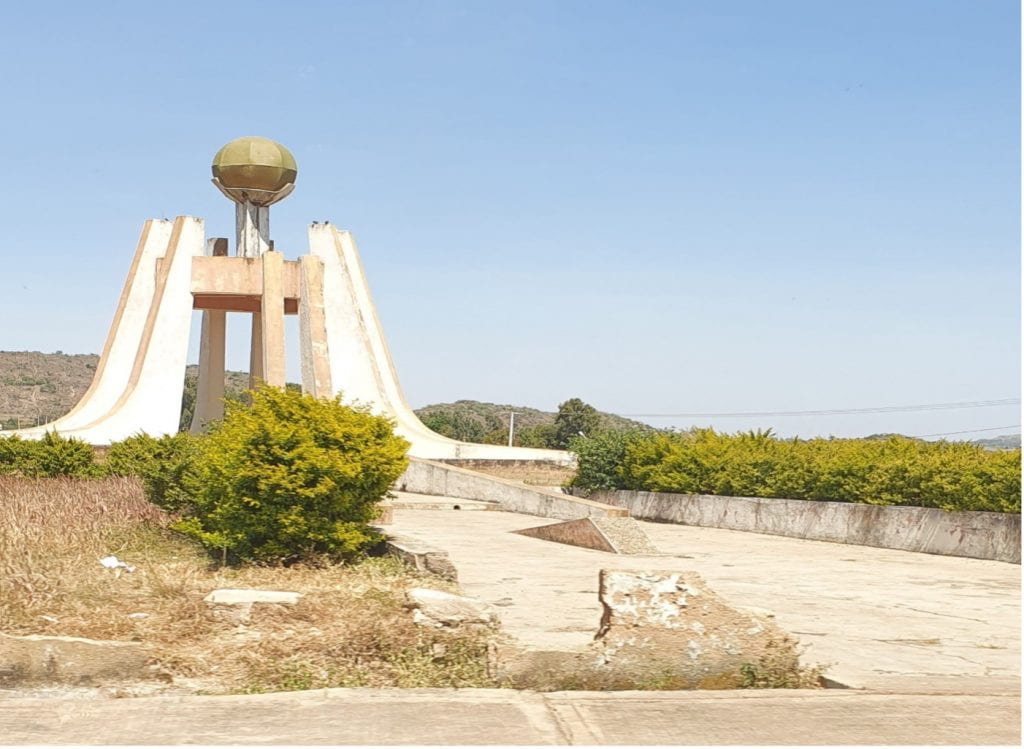
Driving into the City of Jos

Nigeria’s Highest Point located in Jos, Plateau State
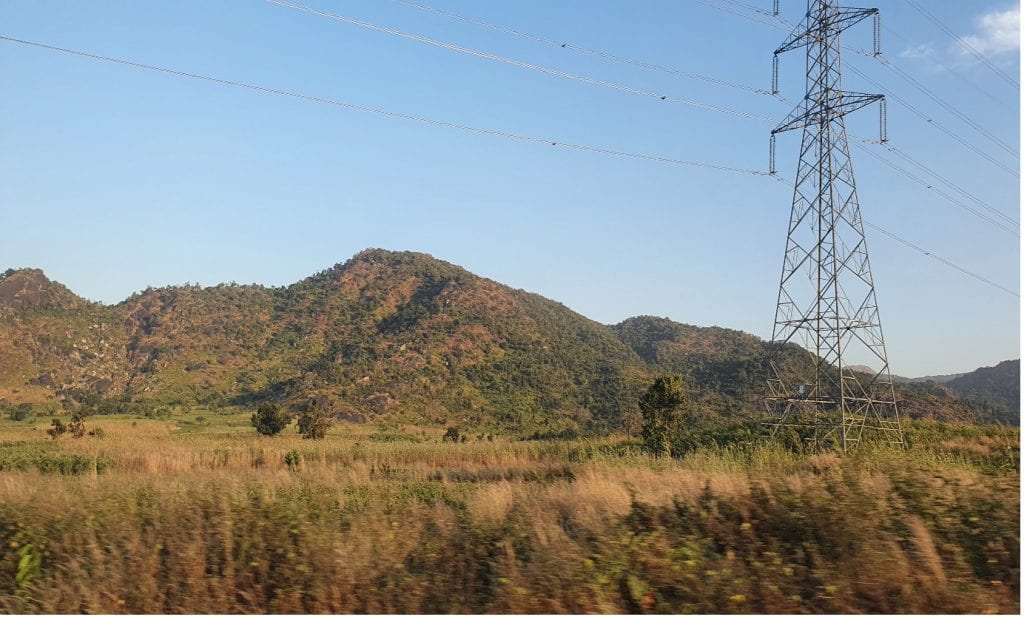
Beautiful Jos scenery

Beautiful, sun-scorched lush vegetation on the hills of Jos
To me, IPP is as much about learning about this phenomenal iterative process of action learning, as it is about unlearning biases in perception, and the closed way of thinking that many specialists are prone to.
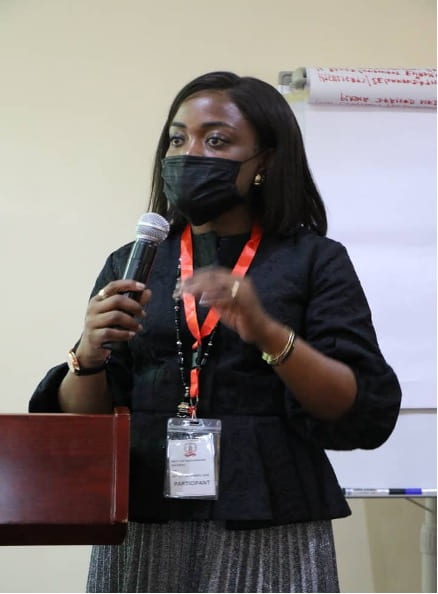
It is therefore important in beginning the PDIA journey to be as open to unlearning former biases and inclinations, as you are to learning new skills and new ways of thinking. I am continuing this incredible PDIA journey for blood safety and more lives saved in Nigeria – it has not been easy, but it has been rewarding, and my heart is in this.
This is a blog series written by the alumni of the Implementing Public Policy Executive Education Program at the Harvard Kennedy School. Participants successfully completed this 6-month online learning course in December 2020. These are their learning journey stories.
